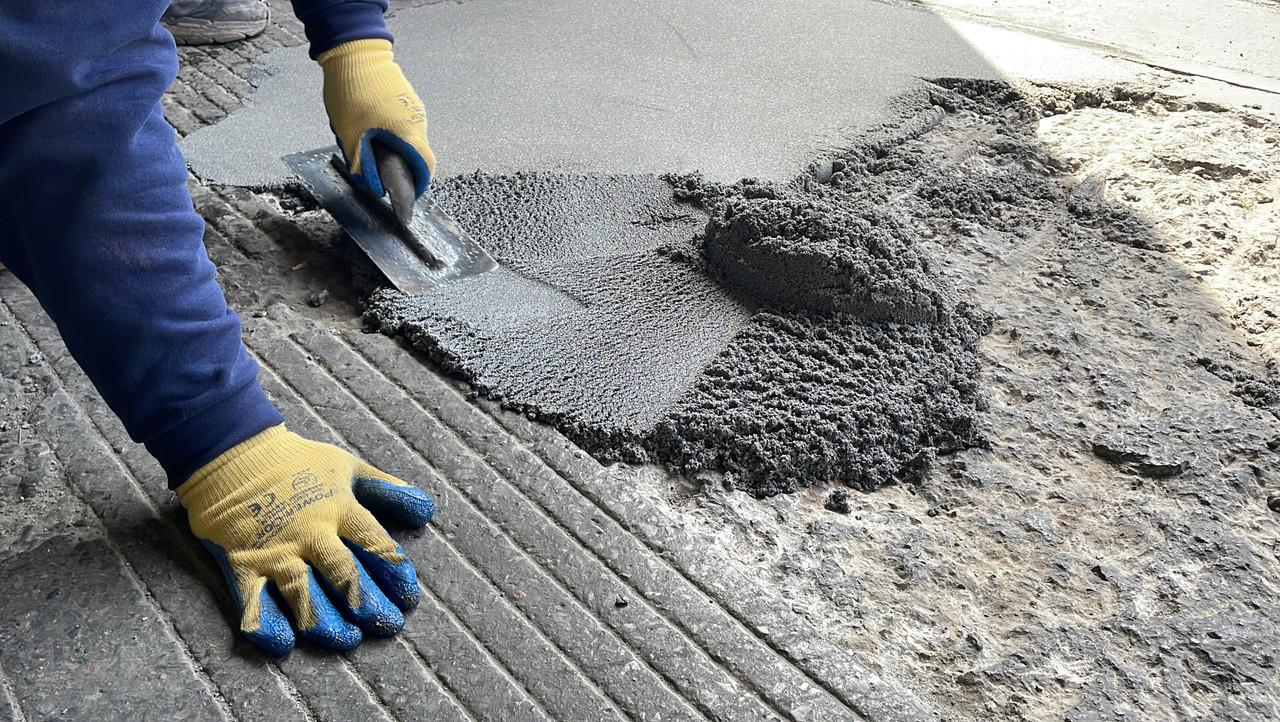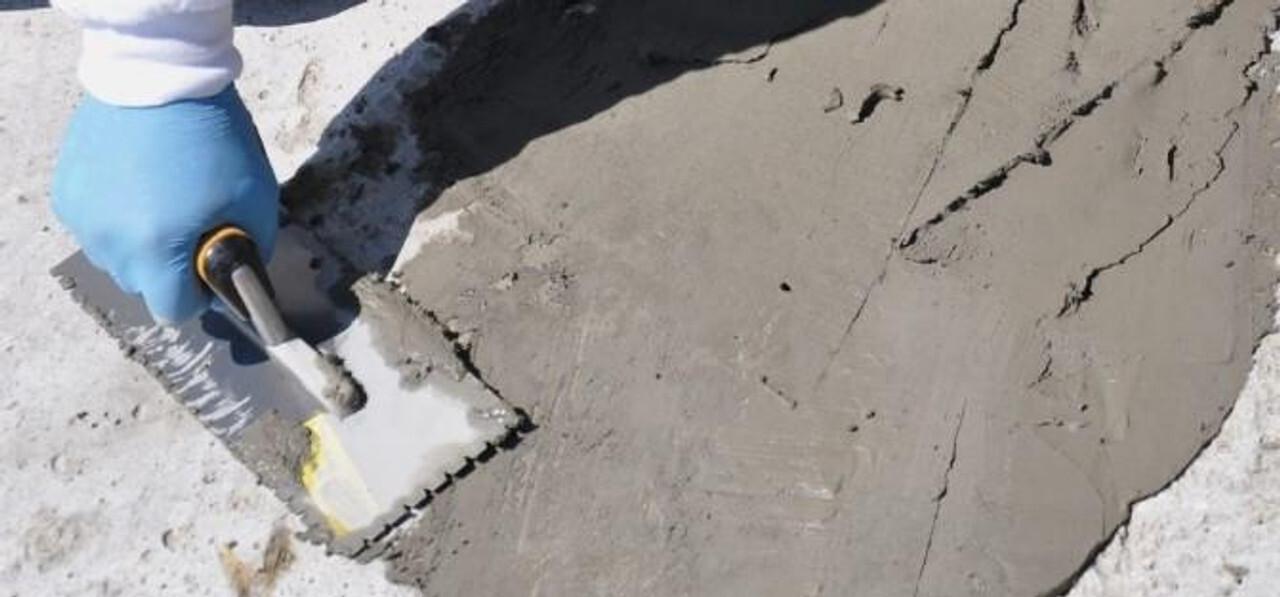The Vital Role of Concrete Resurfacing: Protection, Longevity & Excellence
A Long Term Safeguard
Concrete is the backbone of countless facilities, from heavy-duty industrial plants and food processing facilities to high-traffic commercial kitchens, cold storage freezers, and warehouse distribution centers. However, even the strongest concrete floors are vulnerable over time.
Constant wear from forklifts, pallet jacks, and foot traffic, combined with exposure to harsh cleaning chemicals, moisture intrusion, and extreme temperature fluctuations, can lead to cracks, spalling, and surface deterioration. This type of concrete damage not only affects the appearance of the floor but also creates safety hazards and compliance risks. That’s where concrete resurfacing becomes essential.
More than just a cosmetic upgrade, epoxy and polymer-modified resurfacing systems provide a long-term safeguard by restoring structural integrity, improving slip resistance, sealing against chemical attack, and extending the life of the floor.
By investing in concrete floor resurfacing, facility managers can reduce costly downtime, meet USDA/FDA requirements, and maintain a durable, high-performance surface built to withstand the toughest industrial environments.

Why Resurfacing Matters
- Shields Against Damage Before It Starts
Unprotected concrete is vulnerable to water penetration, detergents, and chemical attack. In one bakery, untreated slabs under steam-cleaned ovens eroded down to the gravel. Resurfacing created a protective barrier that stopped erosion and maintained a clean, polished appearance. - Handles Thermal Shock & Temperature Extremes
Rigid coatings like epoxy cannot accommodate the expansion and contraction of concrete under thermal stress, leading to cracking and delamination. In settings such as blast freezers or commercial kitchens, urethane cement mortars breathe with the substrate. They resist thermal shock and remain bonded under extreme conditions. - Minimizes Downtime - Time is Money!
Traditional coatings often require long curing times or multiple layers. Urethane cement systems cure quickly, even on fresh pours, and can be trafficked within hours. In a fish-processing facility, work began Friday afternoon and production resumed by early Monday with no primer required, saving time, material, and labor. - Enhances Safety, Hygiene & Compliance
Concrete Resurfacers can improve slip resistance, essential in wet or chemical-exposed environments. They can also meet USDA, FDA, and OSHA standards, critical in food and beverage settings. One testimonial highlighted how a urethane cement resurfacer with a semi-gloss finish eased cleaning and inhibited bacterial growth, without VOC odor. - Restores Function & Appearance
Beyond protection, resurfacing restores aesthetics - whether smoothing out uneven slopes in a glass plant to prevent damage or giving an industrial floor a decorative finish that impresses both staff and visitors.
How to Resurface Concrete Floors
For industrial or commercial spaces, choosing high-performance products ensures durability under heavy traffic and chemical exposure. First, pick a concrete resurfacing product based on the facility environment. Colder temperatures may require certain products, such as Arctic Freezite™. Environments with exposure to high heat would require Mortarthane™ HF. Following the product application instructions, just mix, pour and spread.
Why Garon Products Stands Out
For more than 60 years, Garon Products has been a trusted leader in manufacturing and supplying industrial-grade concrete repair products, epoxy floor coatings, and resurfacing solutions engineered for the most demanding environments. Our expertise extends far beyond simple surface protection.
We design systems that stand up to radical temperature swings in freezers and cold storage facilities, resist chemical and corrosive attacks in manufacturing plants and wastewater treatment centers, and meet the strict sanitary requirements of food and beverage processing operations, commercial kitchens, and pharmaceutical production lines. The best part? All resurfacing products are do it yourself.
Purpose-Engineered Resurfacers
Garon’s product line includes targeted solutions:
|
Treflite™ – A 100% solids, anti-slip epoxy mortar/resurfacer that bonds to concrete, steel, and wood; resists abrasion, acid, thermal shock; and cures overnight, ideal for heavy-traffic areas like dairies, commercial kitchens, and correctional facilities. Arctic Freezite™ – A three-component 100% solids epoxy mortar that sets in temperatures as low as –10 °F. Cures fast even in sub-freezing conditions, with no primer or topcoat required, perfect for freezer floors and winter patching. Garon Plug™ – A hydraulic cement ideal for emergency repairs in joints, below/above-grade concrete, or around conduits. It acts as a rapid waterstop, versatile and reliable. |
|
Mortarthane™ HF - A urethane cement patch/resurfacer with thermal shock resistance. Designed for challenging applications, this product is able to withstand agressive chemical exposure as well as oil and steam. |
Reliable, Real-World Performance
Customers consistently report excellent results. Arctic Freezite™ sealed convenience store cooler cracks without changing temperatures. Treflite™ repaired multiple floors in a government building, admired for its performance and service.
Comprehensive Support & Service
Numerous testimonials praise Garon’s prompt, knowledgeable customer service, whether helping specify products, guiding floor preparation, or responding quickly to issues.
Product Snapshots and Use Areas
- Treflite™ – 100% solids epoxy mortar; anti-slip (even wet); bonds to concrete, wood, steel; resists thermal shock, abrasion, acid; cures overnight; ideal for food production, heavy-traffic, and industrial zones.
- Arctic Freezite™ – Three-component epoxy mortar; works down to –10°F; 100% solids, zero VOC; no primer/topcoat needed; sets quickly even under freezing temps; suited for freezer repairs and outdoor cold patches.
- Garon Plug™ – Hydraulic cement for emergency water-stop uses; fills floor/wall joints, sewers, marine, conduits; rapid-setting and versatile floor/wall repair option.
FAQS for Concrete Resurfacing
FAQ 1: What is the proper way to resurface a concrete driveway?
Clean the surface thoroughly, repair any cracks or damage, then apply a concrete resurfacer such as Treflite™ usinga trowel, ensuring even coverage and proper curing.
FAQ 2: How to resurface concrete stairs?
Remove loose debris, and patch damaged areas with NU-STAIR™ Concrete Repair Mortar using a trowel, shaping each step carefully for a smooth finish.
FAQ 3: How long does concrete resurfacing last?
Concrete resurfacing typically lasts 10 to 20 years, depending on climate, usage, surface preparation, and the quality of materials used.
Conclusion
Concrete resurfacers are not just an aesthetic upgrade, but also a strategic investment in durability, safety, sanitation, and productivity. Proper resurfacing stops damage before it begins, tackles the harshest environmental stresses, and gets your facility back online quickly. Garon Product, with its decades of focused innovation and responsive support, delivers high-performance resurfacing solutions like Treflite™, Arctic Freezite™, and Garon Plug™, engineered to meet real-world needs, today and beyond.
Have questions about our concrete repair products? Contact us today.

